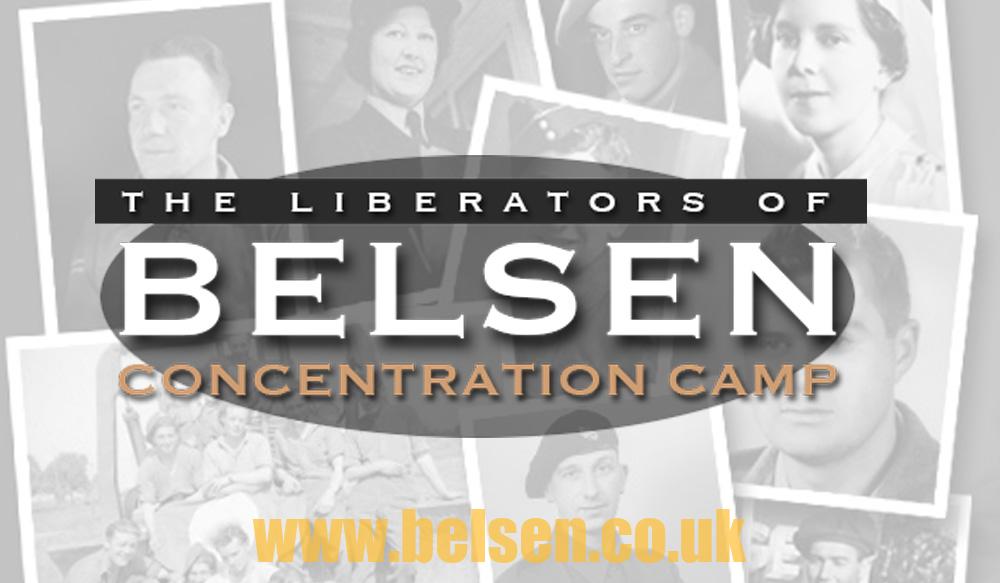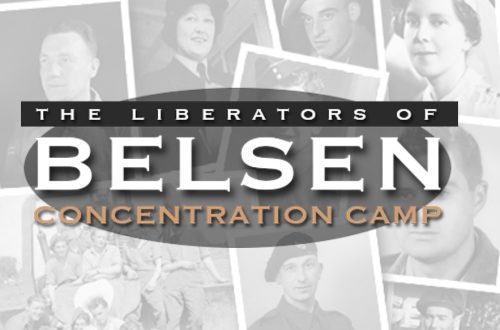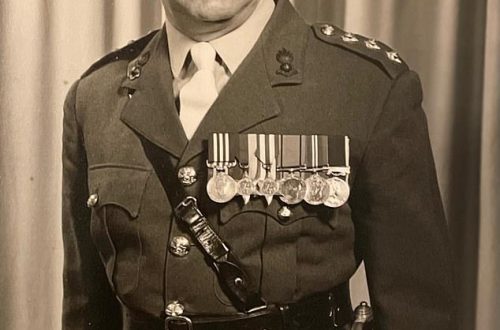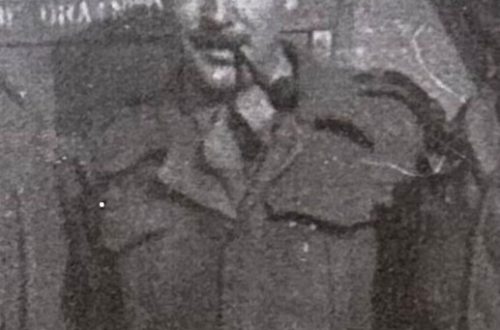
Joy Taverner – Queen Alexandria’s Nurse
My husband’s grandmother (now 82) was a nurse during the War and has a book-worth of stories to tell. The following are 2 letters that she has written to me describing her nursing work during the beach landings and entering Belsen…
Dear Catherine,
You asked me for my war experiences, here are some memories: I was at school at 17 when war was declared and my brother and I were evacuated to Oxfordshire. I met up with him after a fortnight and we decided to go back to London. We lived in Kensington. Without my father’s permission I enrolled to train as a nurse, my hopes of being a vet were put on hold.
I did 3 years training and one year in the operating theatre during the Blitz (our hospital was hit twice!) Then I joined the Queen Alexandria’s Nurses (QA’s). I started off in Peebles with 106 Br. General and then transferred to 29th Br. General. We all met at Goodwood House and waited with hundreds of troops around Portsmouth. D-Day was changed (I think twice) finally we were put on an L.S.T. (a boat) and tied up in the Solent for 3 days waiting for ‘The Mulberry’ to be taken over and for troops to take over the beaches. Finally we went to the Mulberry and one of the trucks with all our kit and belongings went over the side into the sea!
Eventually we landed and were sniped at by Germans. One of our doctors was killed and an orderly was shot and we had to amputate his leg on the side of the road. We had to be careful because everywhere was mined. Notices (Achten Minen) were on the roadsides. Lots of dead bodies.
We went to St. Lord and put tents up in a field as a front-line hospital. In the operating theatre for 3 days and nights – only having a few hours off. Polish men, Germans and Canadians came in – as well as our own troops. I had only the clothes I stood up in so washed my underwear – wrapped them in tissue paper and dried them in the camp oven!!!
It became very muddy and we stayed there until finally we packed up and followed the troops through the Falaise Gap. After that we were taken back in trucks to England and then on to Ostend and finally we took over a convent in Eccloo in Belgium. We turned it into a Military hospital. We were very busy as there was a lot of fighting ahead. Some major battles were fought and finally we were taken in Dakotas to a place in Germany and put into trucks to Belsen 2 days after liberation. Up until then I believed in a loving God and since that time I have never regained my faith…
I have written a poem called ‘Until Belsen’ and I can tell you about my experiences if you wish.
I should have told you – when in France, 7 of us were told to go with some soldiers and we were put aboard a hospital ship. I was very sea sick and useless so was put back on shore 3 days later. A short time after this I heard that the ship had been sunk – one of my best friends did not survive. I still have her photo – a beautiful girl.
After Belsen I went to Hanover and nursed troops there until I was demobbed. I went back to England after 9 weeks at Belsen to get married. We had 3 days and after the wedding my husband went to Schleswig Holstein and I went back to Hanover.
When I left Belsen to marry and flew to England – the only woman on board – they insisted on arrival that I removed all my clothes and showered. They examined me and my mother was sent a letter by the doctors to say I was OK.
Now – Belsen…
Whilst running a hospital in Belgium our Colonel told us we were being flown to this concentration camp. We had never flown before, but were put in a Dakota – a frightening experience – and then trucked to Belsen. It was so terrible we cried ourselves to sleep for many nights in our tents 2 miles away. We had been through the war but this was something so terrible that it took some time for us to come to terms with what we saw…
Skeletons, naked, just standing about. Bodies everywhere. Some babies – still just about alive. We erected a tent and the sister collected the babies and put them in the tent. We entered a big building – the S.S. Officers quarters. Our orderlies took stretchers and collected any bodies that showed signs of life. We sent our Colonel and some soldiers out to look for factories or shops to get clothes, sheets and blankets. When our troops went by German women spat at them.
One of our Sergeants took over a building and put up a big notice HARRODS. Our sense of humour managed to survive. I had nightmares for many years – my husband would wake me up and say I was crying again. After all these years I managed ot live with my memories and the nightmares have stopped. We had no-one to talk to we just had to keep going. Two of our sisters started drinking heavily and were sent home. I don’t really know how we survived – we all supported each other and cried every night with our arms around each other.
There were Poles and French there. Most of them died. A French woman came with a French officer to get her husband. They took him away hoping to get him back to France – he was dying and I knew he would never make it. I was there for 9 weeks. Bodies were collected by trucks every day. We had a board outside and we wrote the number of bodies to be collected. Huge burial pits were dug and hundreds of bodies were put there. We saw some Germans who were P.O.W’s – they were working on the burial grounds and we were disgusted at the way they threw the bodies in. We told the Colonel and finally they began to lower the bodies in more gently. Our Padre would go along and pray over each truck load.
As you know, there were other concentration camps and it is said that over 6 million Jews were killed. I cannot really write about everything that happened there – I have tried over the years to forgive the horrors… whoever created us humans made some awful mistakes. I only hope that in the future the world will become a more peaceful and friendly place.
Joy.
Catherine Green, 2003
11,533 total views




